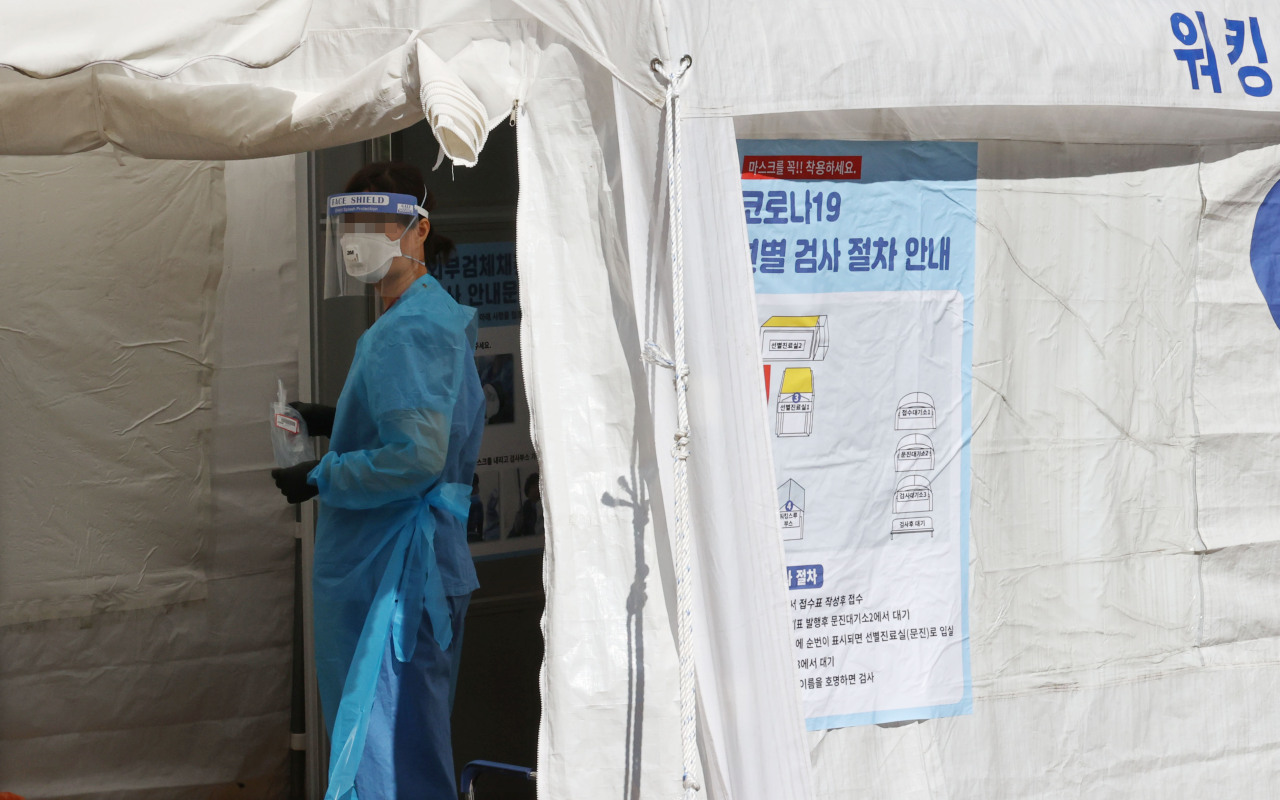 |
(Yonhap) |
South Korea's daily new coronavirus cases stayed below 100 for the second consecutive day Monday in what could be a sign of a slowdown in new infections, but the continued high number of untraceable cases and sporadic clusters pose challenges to the country's virus fight.
The country added 70 more COVID-19 cases, including 55 local infections, raising the total caseload to 23,045, according to the Korea Disease Control and Prevention Agency (KDCA).
On Sunday, the number of daily new infections fell below 100 for the first time in 38 days at 82.
The country's new daily infections had been in the triple digits since Aug. 14 due to cases tied to a church in Seoul and an anti-government rally.
"As people cooperated with the social distancing scheme, the number of new patients from the greater Seoul area also fell below 50 for the first time in around 40 days," Yoon Tae-ho, a senior health official, said during a daily briefing. "Over the past three weeks, the reproduction rate also fell below one."
The rate reflects the number of people that a single patient can infect.
Despite a slight decline, the government on Sunday opted to extend nationwide virus curbs for another week on concerns that the spread of the virus may worsen again during the upcoming Chuseok holiday.
The Level 2 social distancing scheme, which has been under way since late August, will be extended to Sept. 27, as untraceable cases, coupled with cluster infections, have lingered ahead of Chuseok, the autumn harvest celebration.
South Korea operates a three-tier social distancing system.
Under the second level, all indoor gatherings of 50 or more people are banned, while the ceiling is 100 for outdoor meetings.
The measures also call for limiting the operations of so-called high-risk facilities, such as bars and karaoke rooms. Public facilities, such as museums and libraries, will be closed for another week as well.
Large-sized facilities that are allowed to operate will need to keep entry logs of all visitors and make sure that they maintain a safe distance.
Students in Seoul and the surrounding areas, however, returned to school for in-person learning starting Monday.
The country plans to operate a two-week special virus infection preventive scheme after Sept. 27 to brace for Chuseok, when millions normally travel to visit their relatives.
Health authorities warned South Korea may face another wave of the pandemic in autumn, depending on how it deals with the virus over the holiday period.
"A massive migration of people will surely cause another wave of nationwide pandemic," KCDA Director Jeong Eun-kyeong said during a separate briefing. "If people reduce travel, we will be able to curb the spread of the virus and break chains of infection."
Of the additional locally transmitted cases, 21 came from Seoul, and 18 were reported from the surrounding Gyeonggi Province.
Incheon, located west of Seoul, added just one more patient.
The southern port city of Busan reported eight new cases. Two cases were reported from the central city of Daejeon.
Infections tied to last month's anti-government rallies came to 619 as of Monday, up three from a day earlier.
A gym located in western Seoul reported two more patients, raising the related caseload to 10.
An online retailer based in southern Seoul reported 13 COVID-19 patients. Ten more patients were also traced to a residential building in the area, raising the total to 24.
A hospital in the southeastern port city of Pohang reported four patients.
In Busan, three more patients were reported from Dong-A University, raising the total number of related cases to 12.
Health authorities said they are currently working with regional governments to set up guidelines for door-to-door sales businesses and other hotbeds of cluster infections.
The country has been struggling to avoid the highest level of social distancing, which would include banning gatherings of 10 or more people. This would have a severe impact on the nation's economy.
The number of patients in serious or critical condition came to 141, down five from the previous day.
The number of imported cases came to 15.
Of the imported cases, four were from the Philippines. India and Turkey also accounted for three cases each. There were also infections from Indonesia, Russia, Kyrgyzstan, Japan and Australia.
The death toll rose by two to 385. The fatality rate came to 1.67 percent.
A total of 20,248 people has been released from quarantine after making full recoveries, up 90 from the previous day. Nearly 88 percent of the patients reported here have been cured.
South Korea has carried out 2,231,589 COVID-19 tests since Jan. 3. The country reported its first patient on Jan. 20.
Fewer than 5,000 tests were carried out on Sunday. This hovers far below the more than 10,000 tests that are normally carried out on weekdays.
South Korea is also studying what could be the nation's first case of COVID-19 reinfection.
On Saturday, heath authorities said they were looking into the nation's first suspected reinfection case of a woman in her 20s.
"The patient's symptoms were not as severe as her first infection," Jeong said. The KCDA chief said it indicates that people can be infected with COVID-19 again like the flu.
So far, there have been 705 Korean patients who tested positive a second time after recovery. Experts did not regard them as reinfections, saying dead virus fragments remaining in the patients' bodies were likely detected in the tests. (Yonhap)








![[Today’s K-pop] Blackpink’s Jennie, Lisa invited to Coachella as solo acts](http://res.heraldm.com/phpwas/restmb_idxmake.php?idx=644&simg=/content/image/2024/11/21/20241121050099_0.jpg)